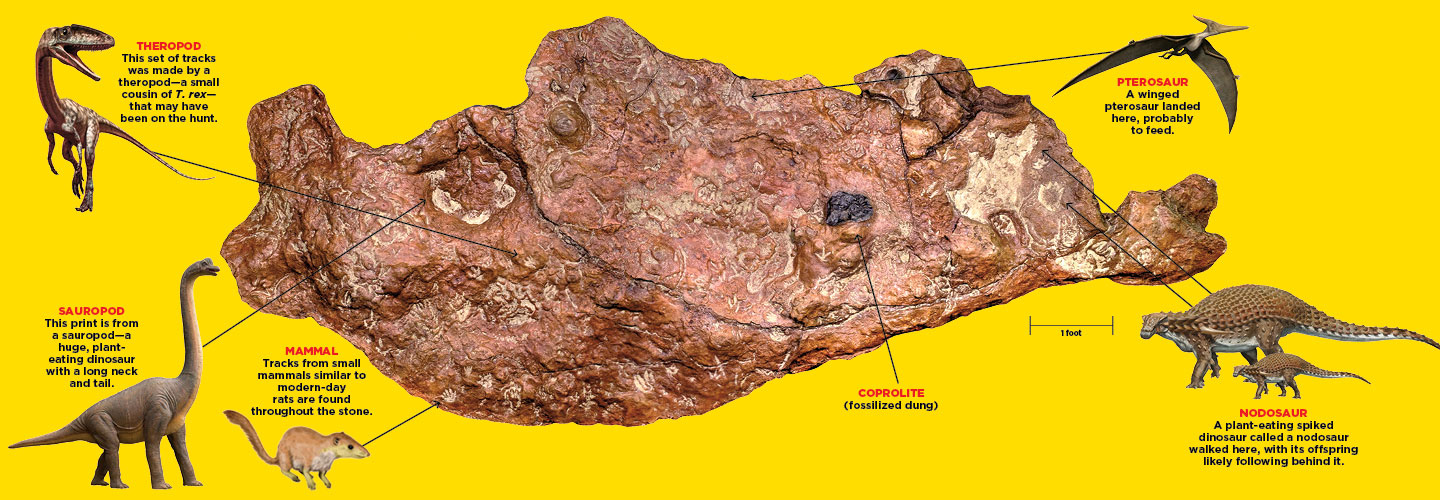
It’s as close as we may ever get to a snapshot of Earth before the Ice Age. Look carefully at this 8-foot by 3-foot slab of sandstone, and you’ll see the footprints of dinosaurs, flying reptiles, and mammals that lived and interacted more than 100 million years ago in what is now Maryland.
The once-soft mud eventually hardened, preserving more than 70 footprints. Unearthed on the grounds of NASA’s Goddard Space Flight Center in Greenbelt, Maryland, the slab is now providing insight into a time when North America teemed with these beasts. Because no prints overlap, scientists think it could be the most accurate record ever found of prehistoric species crossing paths within a few days—or hours—of one another. As Ray Stanford, the amateur




